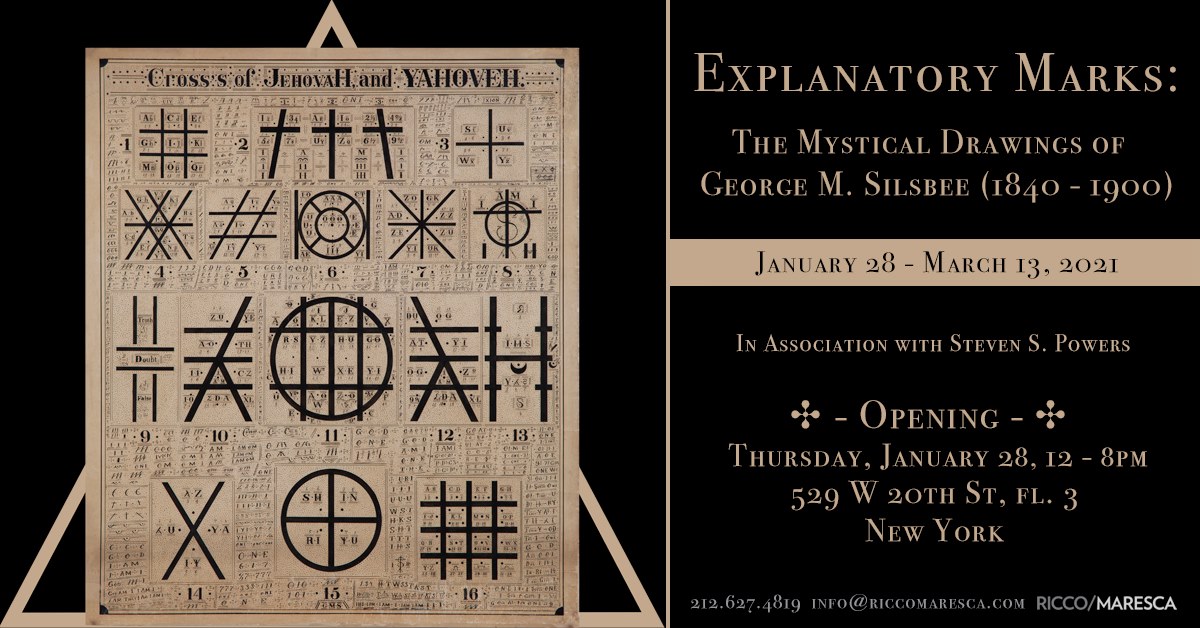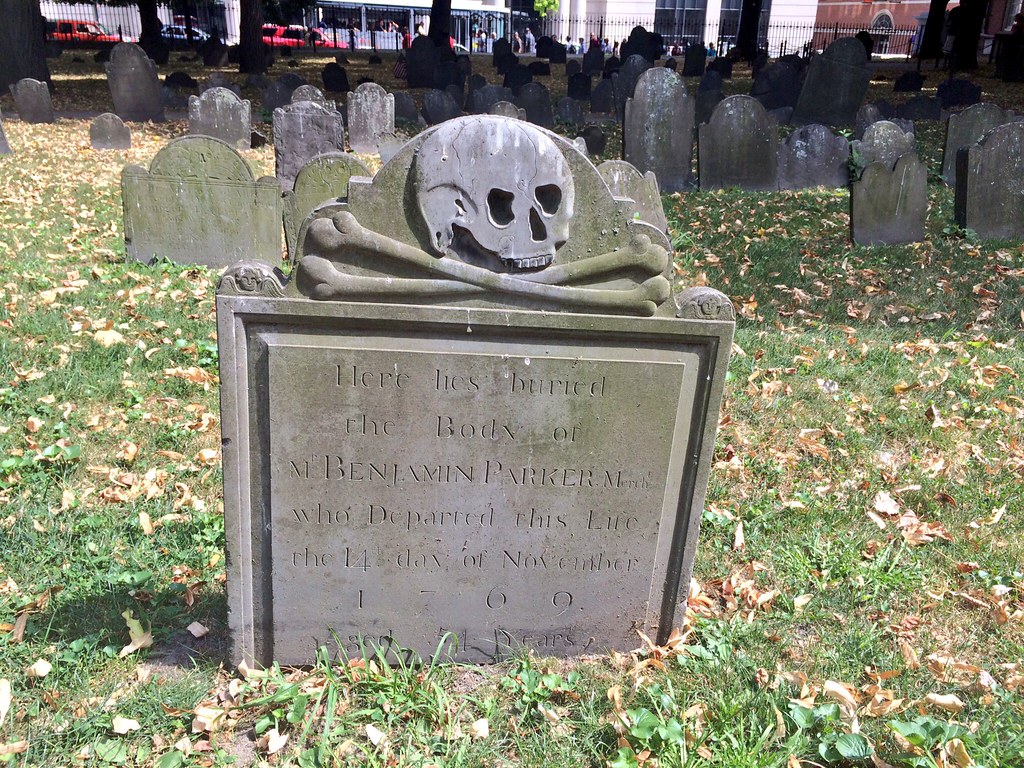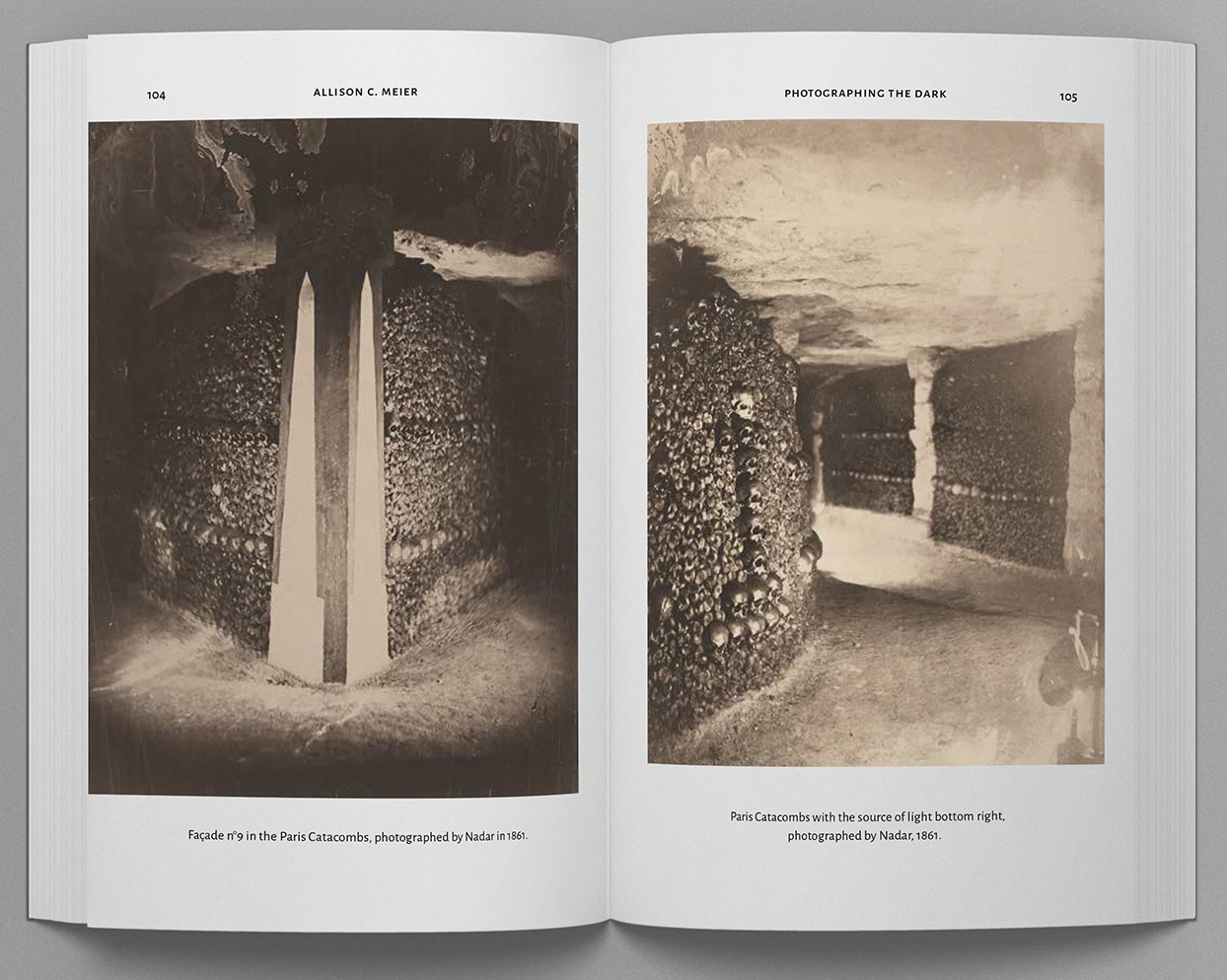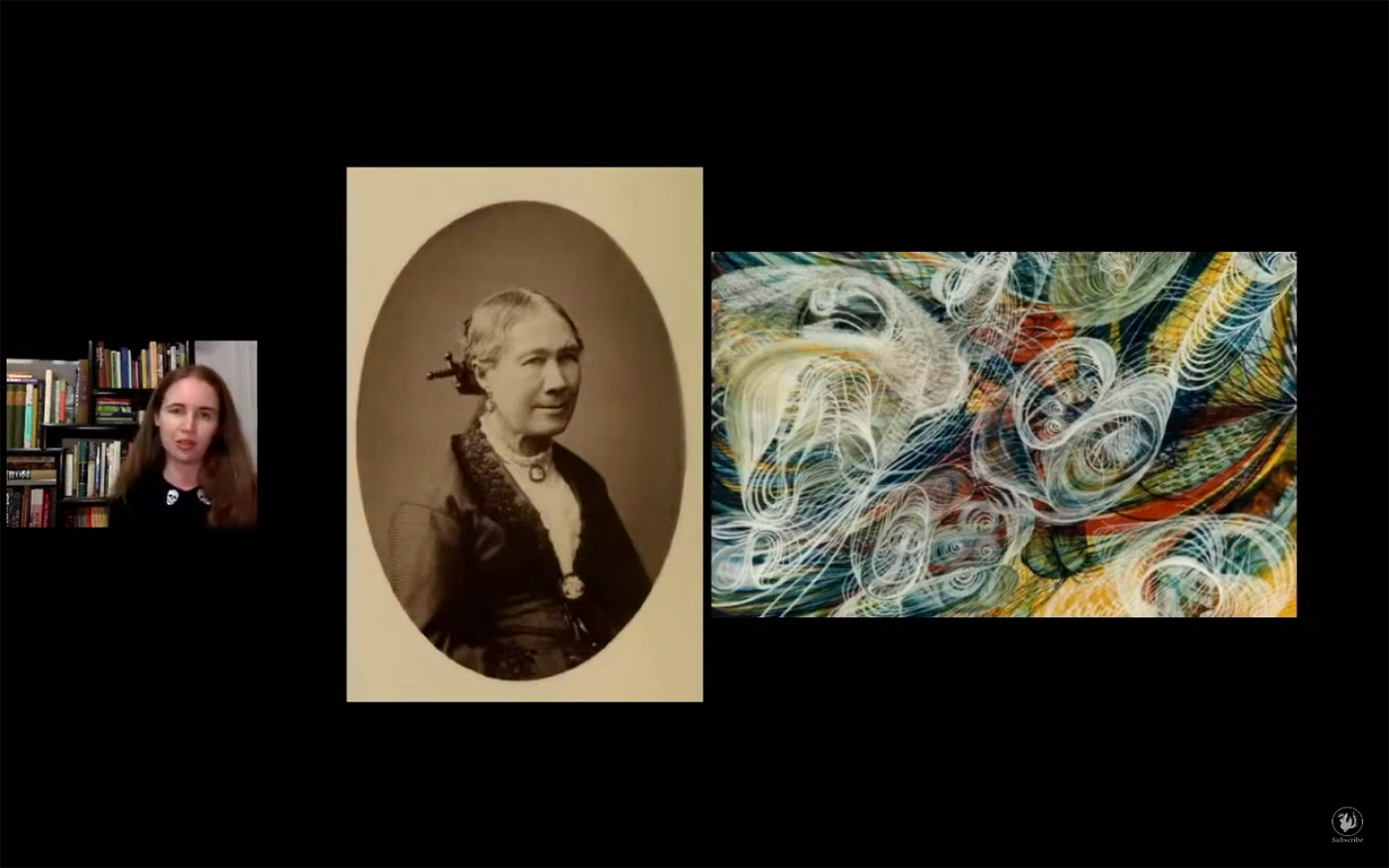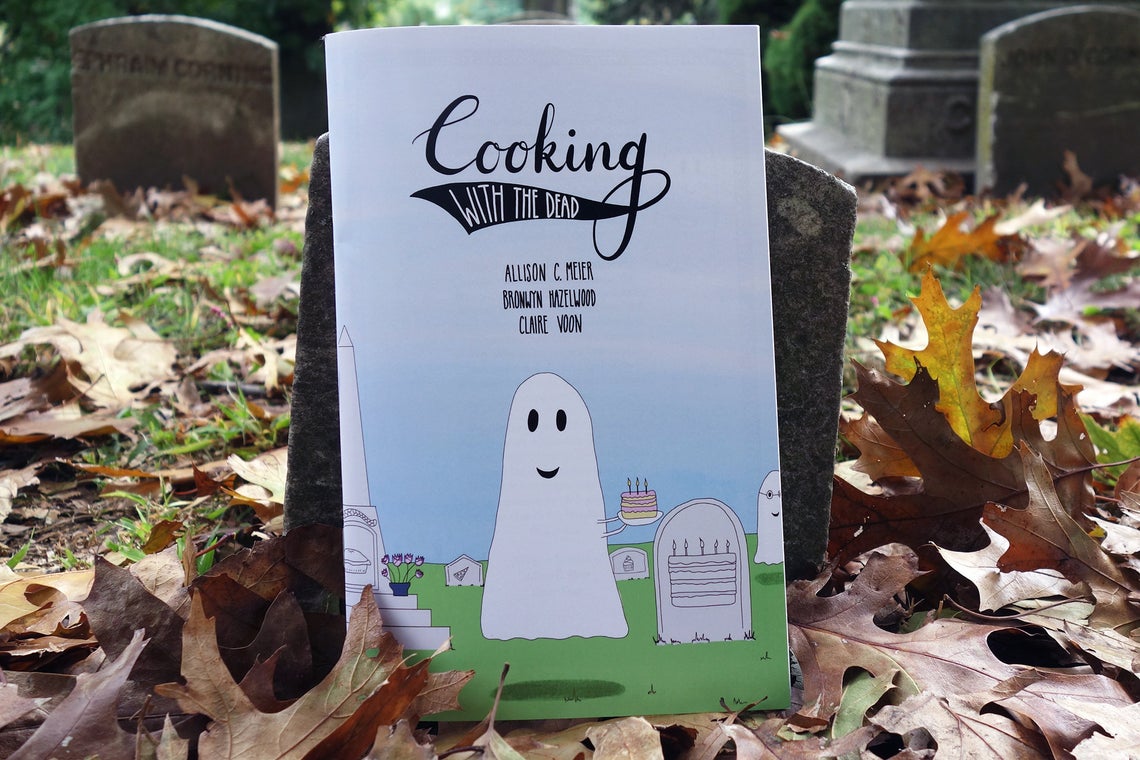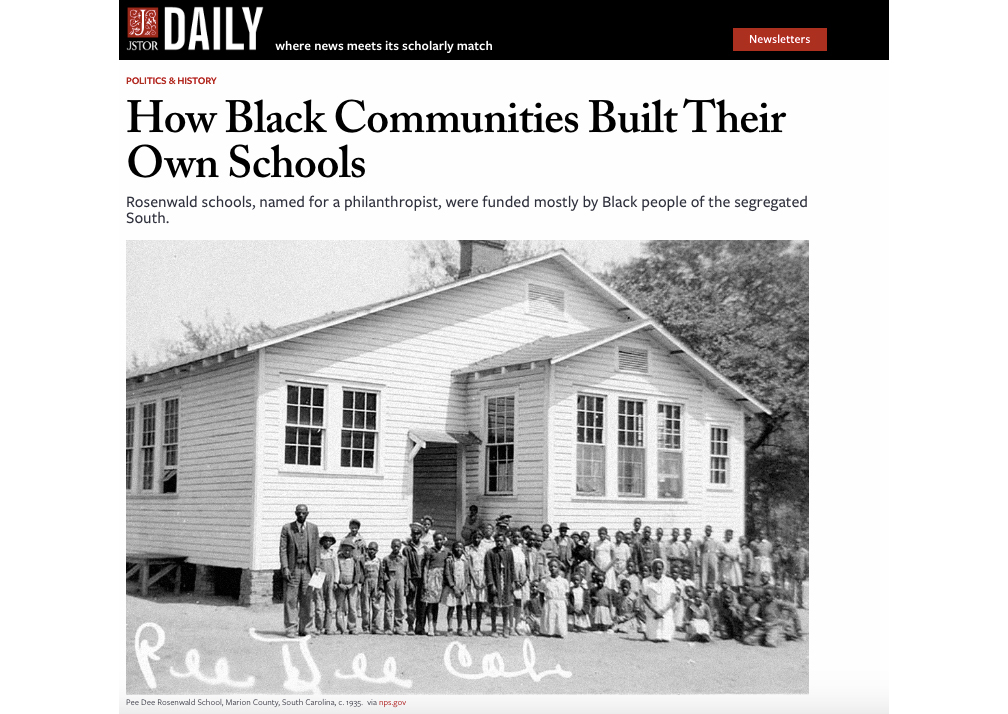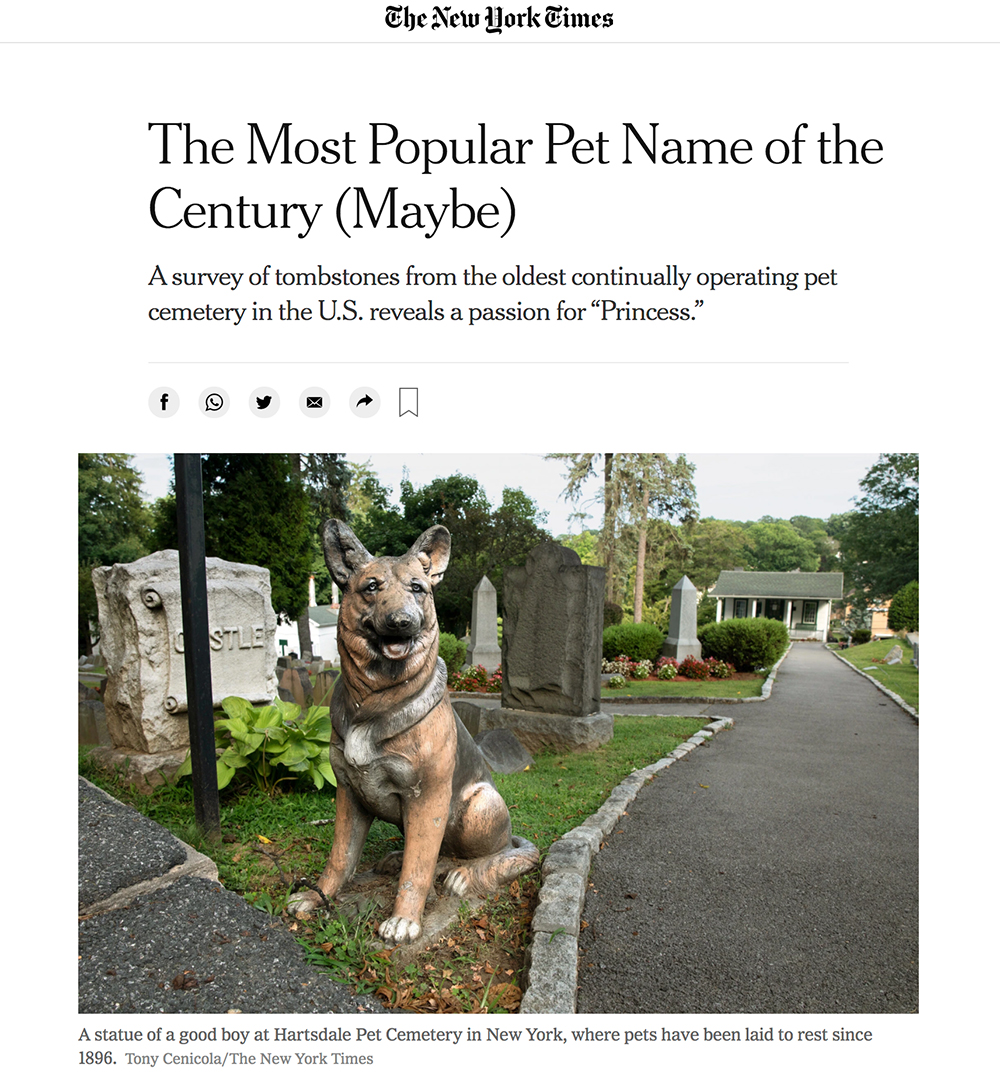
While I’ve spent a lot of time writing about cemeteries and interviewing other people about them, I don’t get interviewed too much myself so it was fun to share my pet cemetery expertise with the New York Times for “The Most Popular Pet Name of the Century (Maybe).” I find the places where people memorialize their pets to be fascinating. (I shared some favorite epitaph sightings at Hartsdale Pet Cemetery in 2014 on Atlas Obscura.) It’s a choice to bury your pet in a pet cemetery and each grave is designed with such emotion and care:
According to Allison C. Meier, a writer and licensed New York City sightseeing guide who gives tours of the city’s cemeteries, including Hartsdale, pet cemeteries provide a historical record of wider cultural shifts around our relationship to pets.
“The way that people refer to their pets changes,” Ms. Meier said in an interview. “On a lot of old dog graves, they call them a gentleman — like, ‘He’s a great gentleman. He lived like a gentleman.’”
